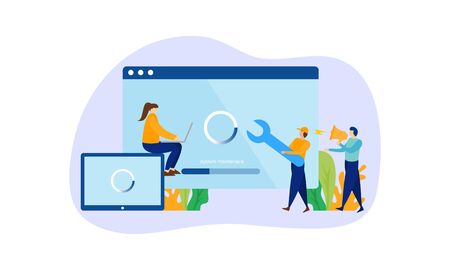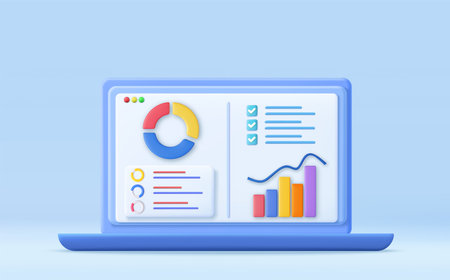1. Getting Started with Screaming Frog
If youre ready to elevate your on-page SEO analysis, Screaming Frog is a must-have tool in your arsenal. This powerful website crawler helps you dissect technical and content elements just like the pros do. First things first, let’s get you set up. Start by downloading the Screaming Frog SEO Spider directly from their official site—its available for both Windows and Mac, making it accessible no matter your setup. Installation is straightforward: follow the prompts, and youll have it running in minutes.
Before diving into your first crawl, it’s crucial to configure some essential settings to ensure you’re capturing the right data. Head over to the configuration menu and review options such as user-agent selection (helpful if you want to mimic Googlebot), crawl depth limits, and whether or not to include subdomains. You’ll also want to adjust the maximum number of URLs crawled if you’re using the free version, which has a 500-URL cap. For bigger sites or more advanced features, consider upgrading to the paid license.
Don’t forget integrations! Connect your Google Analytics and Google Search Console accounts for deeper insights—these settings are found under ‘Configuration’ > ‘API Access’. Lastly, double-check your robots.txt settings so you don’t miss any critical pages that might otherwise be blocked from crawling. Setting up Screaming Frog properly from the start ensures you get comprehensive, actionable data on your website’s on-page SEO elements.
2. Crawling Your Website Efficiently
Before you can analyze on-page SEO elements with Screaming Frog, you need to set up and execute a crawl of your website. Here’s how to do it step by step, along with best practices tailored for both small and large U.S. websites.
Step-by-Step Instructions for Running a Site Crawl
- Download and Install Screaming Frog: Visit the official Screaming Frog website and download the latest version for your operating system. Install and launch the application.
- Enter Your Website URL: In the top bar, type your homepage URL (e.g., https://www.yoursite.com).
- Select Crawl Mode: For most users, the default Spider mode is perfect. If you want to analyze a list of specific URLs, choose List mode.
- Configure Settings: Click on ‘Configuration’ to adjust crawl depth, user-agent strings, or exclude certain paths if necessary.
- Start the Crawl: Hit the Start button. Screaming Frog will begin crawling all accessible pages, collecting on-page SEO data as it goes.
Best Practices for Small vs. Large Websites
| Small Sites (<500 pages) | Large Sites (>500 pages) | |
|---|---|---|
| Crawl Speed | Default settings are usually sufficient | Lower crawl speed to avoid server overload |
| Crawl Limits | No need to limit unless on free version | Set crawl limits in configuration to manage resources |
| Sitemaps | Optional but helpful for completeness | Strongly recommended—upload XML sitemap for targeted crawling |
| User-Agent String | Stick with default or use Googlebot for accuracy | Mimic Googlebot or Bingbot for real-world indexing simulation |
Troubleshooting Common Crawl Issues
- If your site blocks crawlers via robots.txt, update permissions or configure Screaming Frog to ignore robots.txt when appropriate.
- If you experience timeouts or incomplete crawls, reduce crawl speed or increase memory allocation under ‘Configuration > System > Memory’.
Pro Tip for U.S. Market Sites
For American businesses with localized content or multiple subdomains (e.g., store.yoursite.com), add each subdomain separately in Screaming Frog for full coverage. Remember, regular crawls help monitor changes and catch SEO issues early.

3. Key On-Page SEO Elements to Focus On
When analyzing your website with Screaming Frog, it’s essential to understand which on-page elements have the biggest impact on your search visibility in the U.S. market. Here’s a breakdown of the most crucial components and how each one influences SEO performance:
Title Tags
Title tags are arguably the most important on-page element for both users and search engines. They should be unique, accurately describe the page content, and include primary keywords naturally. In American search results, compelling titles can significantly increase click-through rates.
Meta Descriptions
While meta descriptions don’t directly affect rankings, they play a key role in attracting clicks from the search engine results page (SERP). Use Screaming Frog to spot missing, duplicated, or overly long meta descriptions and craft concise summaries that speak to what American users are searching for.
Headings (H1, H2, etc.)
Proper heading structure helps organize content for both readers and search engines. Make sure every page has a single, keyword-rich H1 tag that summarizes the main topic, followed by descriptive H2s and H3s as needed. This structure is especially valued by Google’s algorithms in the U.S.
Image Optimization
Images contribute to user experience but can hurt SEO if not optimized. Check for missing or duplicate alt text and oversized files using Screaming Frog. Alt attributes should be descriptive and include relevant keywords where appropriate—helping improve accessibility and image search rankings.
Internal Links
A healthy internal linking structure guides visitors and distributes link equity across your site. Identify broken links or orphaned pages using Screaming Frog’s reports and ensure important pages are easily accessible from elsewhere on your site.
Other Important Elements
Don’t overlook URLs (clean, keyword-friendly structures work best), canonical tags (to avoid duplicate content issues), and mobile-friendliness (crucial for American audiences who browse on smartphones). By focusing on these elements when auditing with Screaming Frog, you’ll set the foundation for stronger organic performance in the competitive U.S. search landscape.
4. Deep Dive into Screaming Frog’s Analysis Tools
Once you’ve crawled your website, it’s time to leverage Screaming Frog’s robust analysis tools to uncover on-page SEO opportunities and issues. Mastering the interface is key to pinpointing what needs improvement and how to act on these insights effectively.
How to Use the Interface for Powerful SEO Insights
The Screaming Frog dashboard might look overwhelming at first, but it’s designed for clarity and efficiency. At the top, you’ll find filter tabs like Internal, External, Response Codes, Page Titles, and more. Each tab allows you to focus on specific SEO elements within your site.
Filtering Results for Common Issues
Use the built-in filters to quickly surface problems such as missing meta tags, duplicate content, or broken links. For example:
| Filter Tab | Common Issue Detected | Actionable Insight |
|---|---|---|
| Page Titles | Missing or duplicate titles | Add unique, descriptive titles for each page |
| Meta Description | No description or duplicates | Write compelling meta descriptions per page |
| Response Codes | 404/500 errors | Fix broken links or server issues promptly |
You can further refine results using the search and filter options above the data pane—for instance, searching for URLs containing “/blog” to review just your blog posts.
Using Export & Bulk Analysis Features
Screaming Frog lets you export filtered data as CSV or Excel files. This is invaluable for sharing reports with team members or creating prioritized action lists. The Bulk Export feature also enables you to extract all issues of a particular type (like all missing H1s) at once.
Diving Deeper: Custom Extraction & Content Review
The Custom Extraction tool allows advanced users to pull out structured data or specific on-page elements using XPath or regex—perfect for auditing schema markup or checking for certain scripts across your site. Additionally, reviewing word count, crawl depth, and indexability gives you a holistic understanding of your content quality and architecture.
Together, these features help you turn raw crawl data into actionable SEO improvements, giving you a clear edge in optimizing your website’s performance.
5. Exporting, Interpreting, and Acting on Data
Once you’ve crawled your website with Screaming Frog, the next step is to turn all that data into actionable insights. Here’s how to do it like a pro.
Exporting Your Crawl Data
Screaming Frog makes it easy to export your crawl results for deeper analysis or sharing with your team. Simply click the “Export” button in any tab (like “Page Titles,” “Meta Descriptions,” or “H1”) and choose your preferred format—CSV or Excel are the most popular for SEO pros in the U.S. These formats let you slice and dice your data using tools like Microsoft Excel or Google Sheets, making it easier to spot trends and issues.
Interpreting the Numbers
The exported data might look overwhelming at first, but focusing on key metrics will help you make sense of everything. Look for columns like Status Code, Indexability, Word Count, Title Length, Meta Description Length, and Canonical Tags. For example, filter for pages with duplicate titles or missing meta descriptions—these are classic on-page SEO problems that can hurt your site’s performance in Google Search.
Pro Tip:
Use conditional formatting in Excel to highlight red flags, such as title tags over 60 characters or meta descriptions under 100 characters. This visual approach speeds up your workflow and helps you quickly identify what needs attention.
Developing an Action Plan
With your findings clearly laid out, prioritize fixes that will have the biggest impact on user experience and search rankings. For example:
- Fix duplicate or missing title tags and meta descriptions
- Add relevant H1 tags where they’re missing
- Resolve broken links (404 errors) and redirect issues
- Optimize pages with thin content by expanding word counts
Your action plan should be specific—assign tasks to team members, set deadlines, and track progress using a project management tool like Trello or Asana. This way, you’ll ensure every insight from Screaming Frog turns into real SEO improvements.
Bottom Line
By exporting, interpreting, and acting on Screaming Frog data strategically, you’ll boost your site’s on-page SEO like a true professional—and see tangible gains in organic traffic and visibility.
6. Pro Tips and Common Pitfalls
Insider Advice for Advanced Users
If you’re ready to take your on-page SEO analysis with Screaming Frog to the next level, there are several pro tips and hacks that can save you time and deliver deeper insights. U.S.-based SEOs often leverage these advanced strategies to outperform their competition.
Time-Saving Shortcuts
- Custom Extraction: Use XPath or CSSPath queries in Screaming Frog’s Custom Extraction feature to pull specific meta data, schema markup, or even social tags without manual page checks.
- Configuration Profiles: Create and save configuration profiles tailored for different audits—like technical site health, content optimization, or local SEO—so you can swap settings instantly depending on your project’s focus.
- Bulk Export: Instead of exporting data page by page, utilize the Bulk Export menu to quickly gather all relevant elements (titles, descriptions, headers) into a single spreadsheet for easier review.
Integration with Google Tools
- Google Analytics & Search Console: Connect Screaming Frog directly with your GA and GSC accounts. This allows you to overlay user behavior metrics (like bounce rate or sessions) onto crawl data, making it much easier to spot underperforming pages that need SEO attention.
- PageSpeed Insights API: Integrate the PSI API to automatically pull in Core Web Vitals data while crawling. This helps you flag slow-loading pages or those failing CLS/LCP standards without running separate reports.
Frequent Mistakes U.S. SEOs Encounter
- Overlooking Crawl Depth: Many SEOs miss issues deep in the site structure. Always check crawl depth reports—important pages buried too deeply may not rank well in U.S. search markets where competition is fierce.
- Ignoring Canonicalization: Duplicate content remains a common issue. Double-check canonical tags in Screaming Frog’s reports; incorrect canonicals can dilute rankings especially on large e-commerce sites typical in the U.S.
- Misreading Status Codes: Don’t just look for 404 errors. Watch for sneaky 302s that should be permanent 301 redirects, as temporary redirects can hurt link equity and organic performance over time.
The Bottom Line
Screaming Frog is packed with features that go far beyond basic crawling. By mastering custom extractions, leveraging integrations with Google tools, and avoiding common mistakes frequently seen among American SEOs, you can make your audits more efficient and impactful. Stay curious, experiment with configurations, and always keep an eye on how your findings translate into actionable improvements for your website’s visibility.


